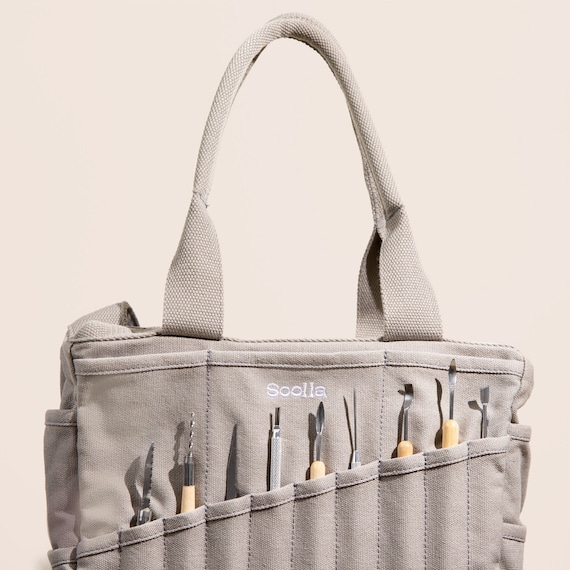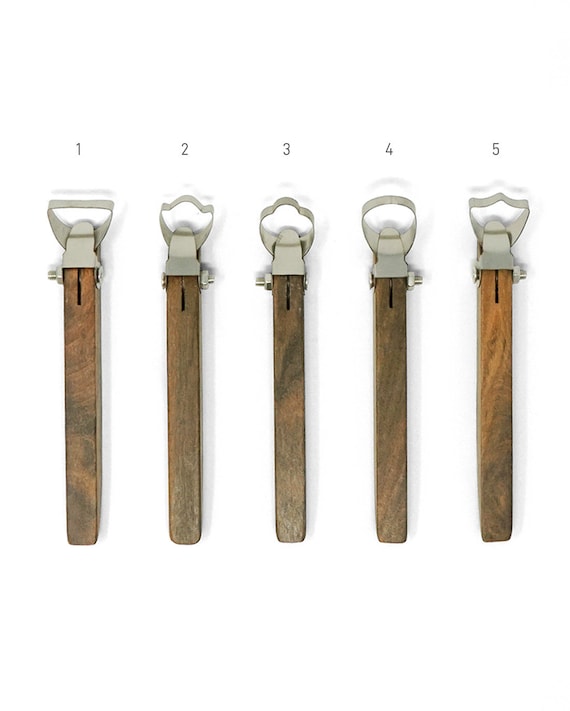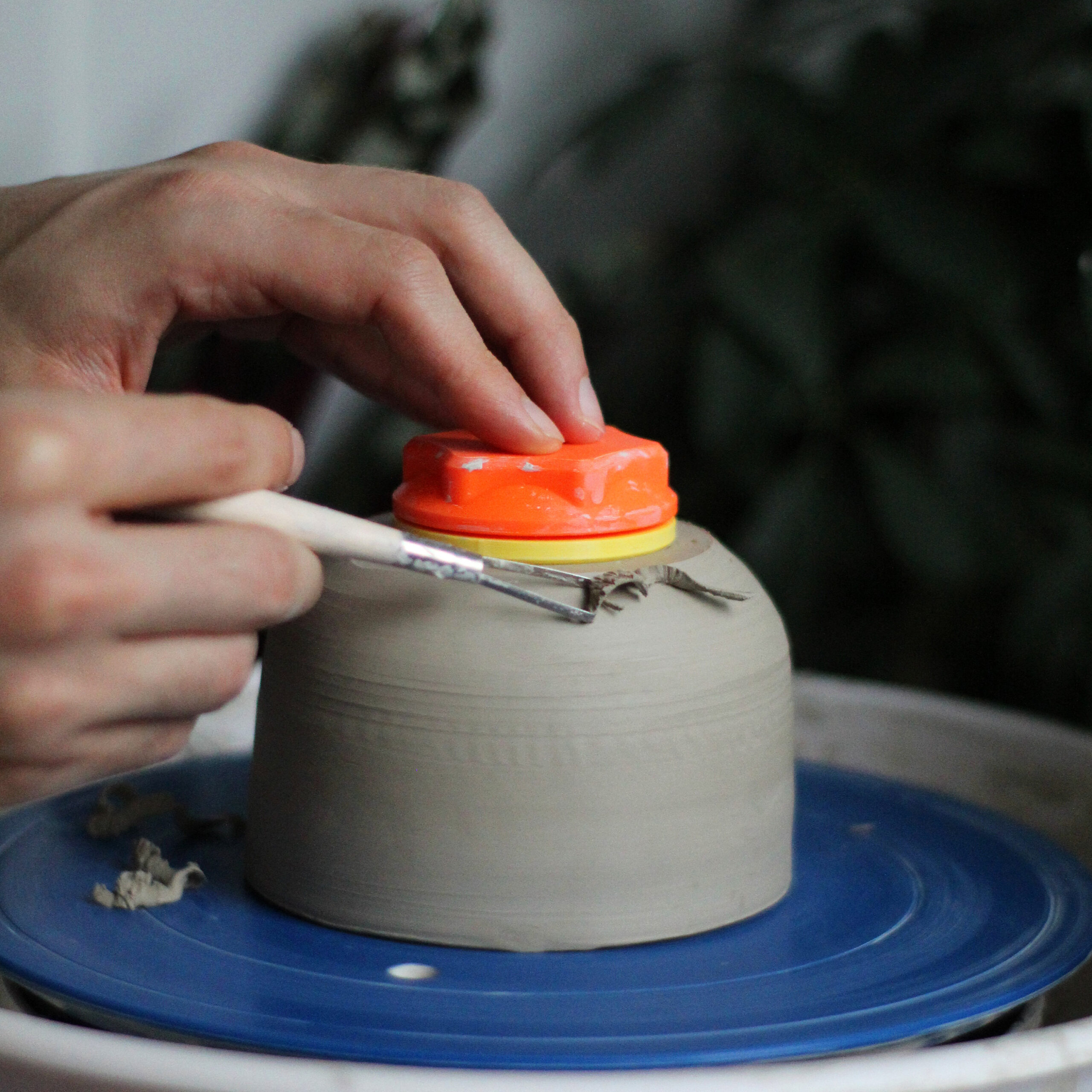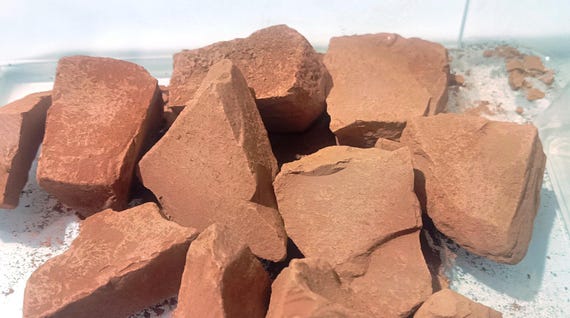Discovering Leather-Hard Clay: A Potter’s Best Friend
Have you ever wondered why so many potters swear by leather-hard clay? This unique stage of clay, with its distinct texture and workability, stands as a crucial point in the pottery-making process. Understanding leather-hard clay is essential for any potter looking to elevate their craft.
In this article, we will explore the numerous benefits of working with leather-hard clay. From enhanced workability and detail to improved structural integrity, each section delves into how this versatile material can transform your pottery. You’ll also discover techniques for easier joining, an array of surface treatment options, and insights into how leather-hard clay can improve your time efficiency in production. Join us as we uncover why leather-hard clay truly is a potter’s best friend!




Mastering the Art of Attaching Leather Hard Clay Pieces
Understanding Leather-Hard Clay
Leather-hard clay represents a crucial turning point in the pottery-making process, acting as a bridge between the supple wet clay and the fired ceramic form. At this stage, the clay exhibits a firmness that allows it to hold its shape while still retaining a slight moisture content. This unique balance makes leather-hard clay an invaluable asset for potters.
Physical Characteristics
When clay reaches the leather-hard stage, it is no longer malleable like wet clay; instead, it feels somewhat like leather—hence the name. You can easily press a fingernail into its surface, leaving an impression without damaging the piece fundamentally. Typically, this stage occurs anywhere from several hours to a day after initial shaping, depending on the clay body and the environmental conditions. The goal for potters is to achieve a uniform leather-hard condition, as inconsistency can complicate subsequent work.
Importance in the Pottery-Making Process
Leather-hard clay is vital for various techniques that potters rely on, such as carving, scoring for joining pieces, and adding finer details. For instance, when creating intricate designs or embellishments, starting with leather-hard clay allows the artist to achieve precision that would be challenging with soft, wet clay. Many potters find that their favorite tools for adding texture and detail work best when the clay has firmed up just enough.
This stage not only facilitates detailed work but also acts as a safeguard against warping or collapsing during handling. Potters often describe the transition through this phase as an exhilarating part of their creative journey, where the vision begins to take shape.
As we dive deeper into the benefits of using leather-hard clay, the next section will explore how this unique workability enhances both craftsmanship and the final aesthetic of pottery pieces.
When you have the right tools at your side, like a well-organized studio bag, the possibilities with leather-hard clay truly expand!
Enhanced Workability and Detail
Leather-hard clay is often praised for its remarkable balance of firmness and malleability, making it an ideal medium for potters seeking to introduce intricate designs and refined details into their work. At this optimal stage, you can manipulate the clay with impressive precision—an essential quality that every artist cherishes.
The Perfect Balance
When leather-hard clay reaches its optimal state, it allows for:
For example, many potters use this stage to create beautiful, intricate patterns that define their style, like floral imprints or geometric textures. This can lead to stunning visual depth and tactile interest in finished work.
Having the right tools, such as a professional mug handle carving tool, enhances your ability to craft beautiful details efficiently. The enhanced control at this stage can turn ordinary pieces into extraordinary statements.
Real-World Applications
Consider a potter working on a complex vase. While the soft clay allows for big shapes and forms, it’s the leather-hard stage that brings out the finesse. With stable consistency, you can easily incise lines or add decorative handles without the fear of distortion. This method allows for not just aesthetic improvements but functional ones as well.
Additionally, the ability to work with details at the leather-hard stage encourages exploration and experimentation. Potters feel inspired to push the boundaries of their creativity, trying new designs or intricate combinations that elevate their pieces.
As we continue on this exploration of the benefits of leather-hard clay, the next section will delve into how this exceptional workability also results in improved structural integrity of your cherished creations.
Improved Structural Integrity
The transition to leather-hard clay not only influences artistry but significantly enhances the structural integrity of pottery. At this unique stage, the clay is firm enough to support itself, making it less prone to the warping or collapsing that is common with wet clay. This robustness opens up new avenues for potters, particularly when creating larger or more complex forms.
Stability in Craftsmanship
When you’re working with leather-hard clay, the increased stability allows for:
For instance, a potter who frequently creates large bowls can utilize leather-hard clay to construct intricate rim designs or multi-layered accents that would be nearly impossible in the early stages of wet clay. This added strength lets potters focus on creativity instead of constantly checking for stability as they work.
Real-Life Examples
Consider a potter aiming to craft an elaborate teapot with intricate spouts and handles. At the leather-hard stage, they can firmly attach these components, ensuring they maintain their intended form while facilitating detailed adjustments. This phase isn’t just about aesthetics; it’s about functionality, too. Strong joins at this stage reduce the likelihood of breakage during the drying and firing processes.
The improved structural integrity of leather-hard clay is crucial not only for personal satisfaction in crafting but also for ensuring that each piece stands the test of time.
With a strong foundation established, the next section will highlight how the joining techniques become remarkably easier with leather-hard clay, paving the way for even more ambitious projects.
Easier Joining Techniques
When it comes to pottery, creating multi-part constructions, whether simple or complex, is often a delicate dance. Leather-hard clay serves as the perfect partner for this task, allowing potters to utilize effective joining techniques such as scoring and slipping to achieve strong bonds between pieces.
The Power of Scoring and Slipping
At the leather-hard stage, the clay’s texture and firmness make it ideal for joining:
By applying these techniques during the leather-hard stage, potters can create strong, lasting bonds that withstand the rigors of drying and firing. This method also allows for adjustments, making it easier to reposition parts before the piece becomes too rigid.
Real-World Applications
Imagine a potter crafting a whimsical figurine with separate components for the head, body, and limbs. At the leather-hard stage, they can score each connection point, apply slip, and join the parts seamlessly. This process enhances both the visual appeal and structural integrity of the completed work, preventing future cracking or separation.
Moreover, these techniques lend themselves well to repairs. If a piece breaks, potters can rejoin sections with the same process, ensuring that the bond is stronger than with wet clay, which may lack sufficient grip.
Creative Exploration
The ease of joining techniques with leather-hard clay opens the door for experimentation. Artists can explore innovative designs—like assemblages or modular pottery—because they know that secure joins are possible even in more intricate arrangements.
As we progress to the next section, the versatility in applying surface treatments becomes evident, showcasing how leather-hard clay can also enhance the final aesthetics of your creations.
Versatile Surface Treatment Options
As potters delve into the world of leather-hard clay, they unlock a treasure trove of possibilities for decorating their creations. This unique stage allows for a range of surface treatments—each offering a distinct approach to enhancing artistic expression.
Decorating with Ease
Leather-hard clay is an ideal canvas for various decorative techniques, including:
For instance, a potter may choose to brush on a dark slip before carving intricate patterns. Once fired, the contrast between the clay body and the slip can create stunning visual effects that catch the eye.
Creative Glazing Techniques
The leather-hard state also sets the stage for unique glazing practices. The clay’s firmness allows potters to experiment with different glazing techniques without compromising the integrity of the piece:
Real-World Applications
Consider a potter creating a serving platter. At the leather-hard stage, they can carve swirling patterns into the surface before applying a light glaze that accentuates those designs. The combination of texture and color will captivate any guest at a dinner party and make the piece a striking centerpiece.
For a more avant-garde approach, potters often incorporate mixed materials at this stage. Adding metallic paints or unique surface feels can yield one-of-a-kind results, showcasing personal artistry in an innovative light.
In embracing all these treatment options, potters can transform their work into a vibrant reflection of their artistic vision. As we continue our exploration, the next section will highlight the time efficiency that leather-hard clay affords to both novice and experienced potters alike.
Time Efficiency in Pottery Production
When you’re immersed in the enchanting world of pottery, balancing creativity with efficiency can be a challenge. Enter leather-hard clay, your ally in streamlining the pottery-making process. This unique stage of clay not only enhances your artistic expression but also optimizes your workflow, saving precious time.
Consolidating Steps
With leather-hard clay, potters can effectively combine multiple steps into a singular, cohesive workflow. This efficiency manifests in several key areas:
Faster Production Cycles
The time it takes to prepare, assemble, and finish pottery is significantly reduced when using leather-hard clay. A few ways it speeds up production include:
Real-World Benefits
For example, a production potter aiming to create a line of matching bowls can mass-produce the bases in leather-hard clay. Utilizing the same workspace and tools, they can score, slip, and join multiple pieces in one session, decreasing the overall time spent on finishing touches while ensuring uniformity across their designs.
As you can see, leather-hard clay not only fosters artistic innovation but also equips potters with the time-saving tools needed in today’s fast-paced creation environment. With time efficiency on your side, you’ll be poised to shift your focus towards even greater artistry.
With this newfound understanding, let’s transition to the conclusion, where we’ll embrace the transformative role of leather-hard clay in your pottery journey.
Embracing Leather-Hard Clay in Your Pottery Journey
Incorporating leather-hard clay techniques into your pottery practice can significantly enhance both your craftsmanship and creativity. By taking advantage of its unique properties, potters can achieve stunning levels of detail, ensure structural integrity, and explore innovative surface treatments. This versatile medium allows for artistic expression while maintaining the functional qualities essential to pottery.
As you continue on your pottery journey, remember to experiment with leather-hard clay to discover its full potential. Whether you’re a seasoned artist or a beginner, embracing this stage of clay can elevate your work and inspire new ideas. Dive into this exciting realm, and let your creativity flourish!





Leather-hard clay is cool and all, but why is it better for joining techniques? I usually just slab build, so I’m curious if there’s a tangible difference.
Great question, Kevin! Leather-hard clay has just the right moisture for joining—hard enough to hold shape but still pliable. It’s a lifesaver! 😄
Exactly, Sophie! The moisture level in leather-hard clay allows for better adhesion when joining pieces.
I absolutely love using leather-hard clay! It really does feel like a potter’s best friend, especially when you’re trying to add those fine details to your mugs. I recently got the Mug Handle Carving Tool and wow, it’s a game changer! 🌟 Anyone else have recommendations for tools that work well with this type of clay?
Totally agree! The Mug Handle Carving Tool is super handy. I’ve also found that the Professional Polymer Clay Sculpting Tool Set is amazing for finer details.
Glad to hear you love the Mug Handle Carving Tool! It really helps with precision. Have you tried the Mini Tabletop Clay Extruder? It’s great for consistent shapes!
I never really understood the hype around leather-hard clay until I tried it myself. It’s so much easier to join pieces together when it’s at that stage. I’m still a newbie though, so I appreciate all the tips! 😊
Right? I had the same experience! There’s definitely a learning curve, but the results are worth it.
Thanks for sharing your experience, Sam! Joining techniques get easier with practice, so keep at it!
I’ve been potting for years, but leather-hard clay still blows my mind! The time efficiency it offers is unmatched. I love how I can keep working without worrying about drying too fast. Anyone else feel this way?
Absolutely, Nina! It’s such a relief not to rush through the process. Makes pottery feel less stressful!
So glad to hear that, Nina! Finding that balance between workability and drying time is key to enjoying pottery.
So, leather-hard clay…what’s the big deal? I mean, I’m all for enhancing workability, but seriously, is it really that much better? Just trying to get the lowdown before I invest in all these fancy tools. 🤔
It really is! Once you get the hang of it, you’ll see the difference. Plus, tools like the Graphite Soolla® Studio Bag make it easier to carry your supplies!
Great question, Tommy! Leather-hard clay is known for its versatility. It really helps with structural integrity, too. Definitely worth trying!
Honestly, I just started and I’m overwhelmed with all the info! The article was helpful, but I still feel lost. Can anyone recommend a good beginner toolkit?
Don’t worry, Henry! It takes time to get comfortable. The Mini Tabletop Clay Extruder is also a great addition for beginners!
I hear ya, Henry! The Professional Polymer Clay Sculpting Tool Set is good for starters. It’s got a variety of tools for different techniques.
I’ve been using leather-hard clay for a while now, and I can’t go back! The surface treatment options are endless. I recently painted some pieces and they turned out gorgeous! 😍
So glad you’re enjoying it, Diana! Surface treatments can add such a personal touch to pieces.
That sounds amazing, Diana! Did you use any specific paint? I’m looking for recommendations!
I’m intrigued! But can someone explain how it helps with structural integrity? I’m all about sturdy pots that last.
It helps because at leather-hard stage, the clay isn’t too fragile yet. It allows you to refine shapes without fear of breaking!
That’s a great point, Derek! Leather-hard clay maintains strength while still being workable.